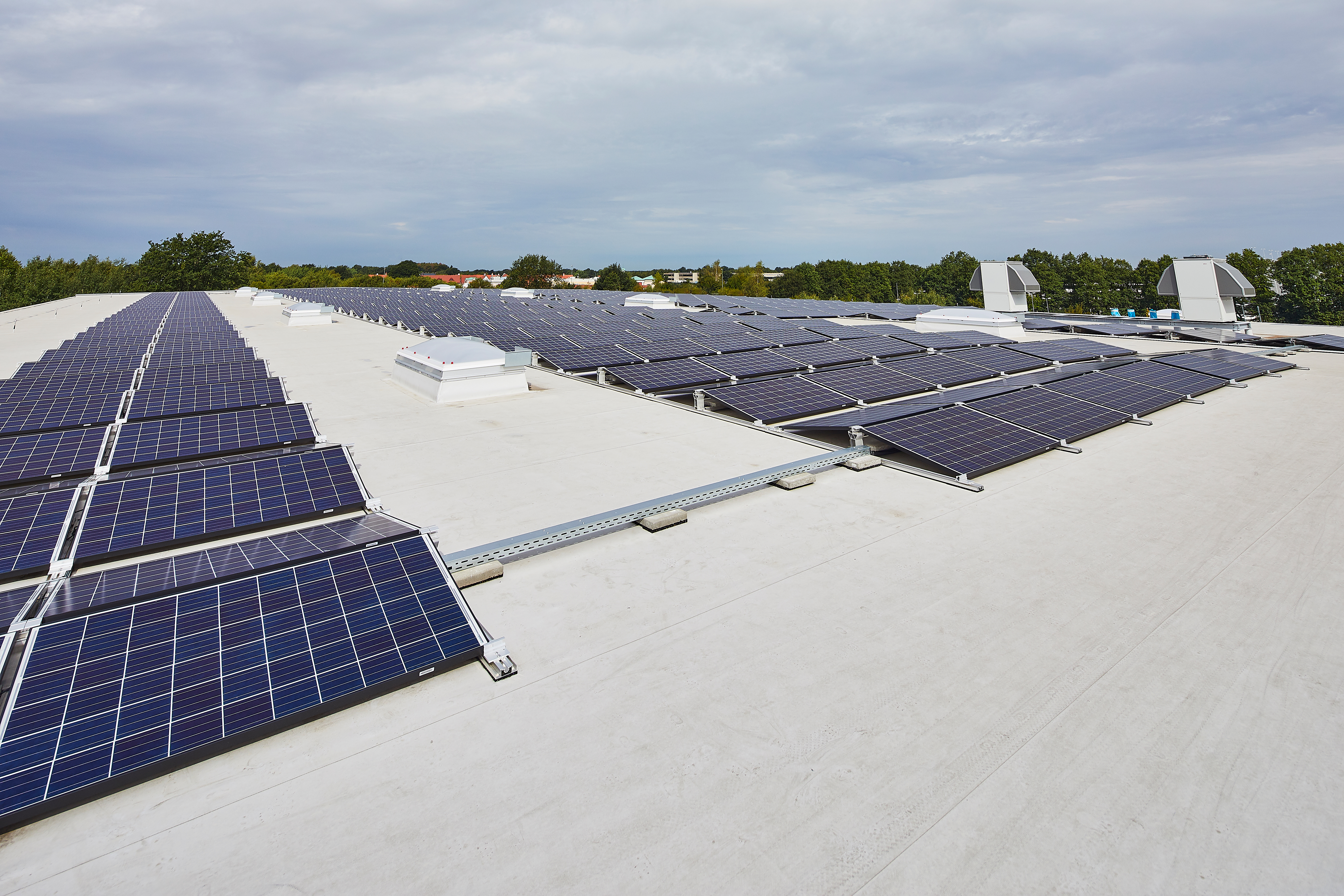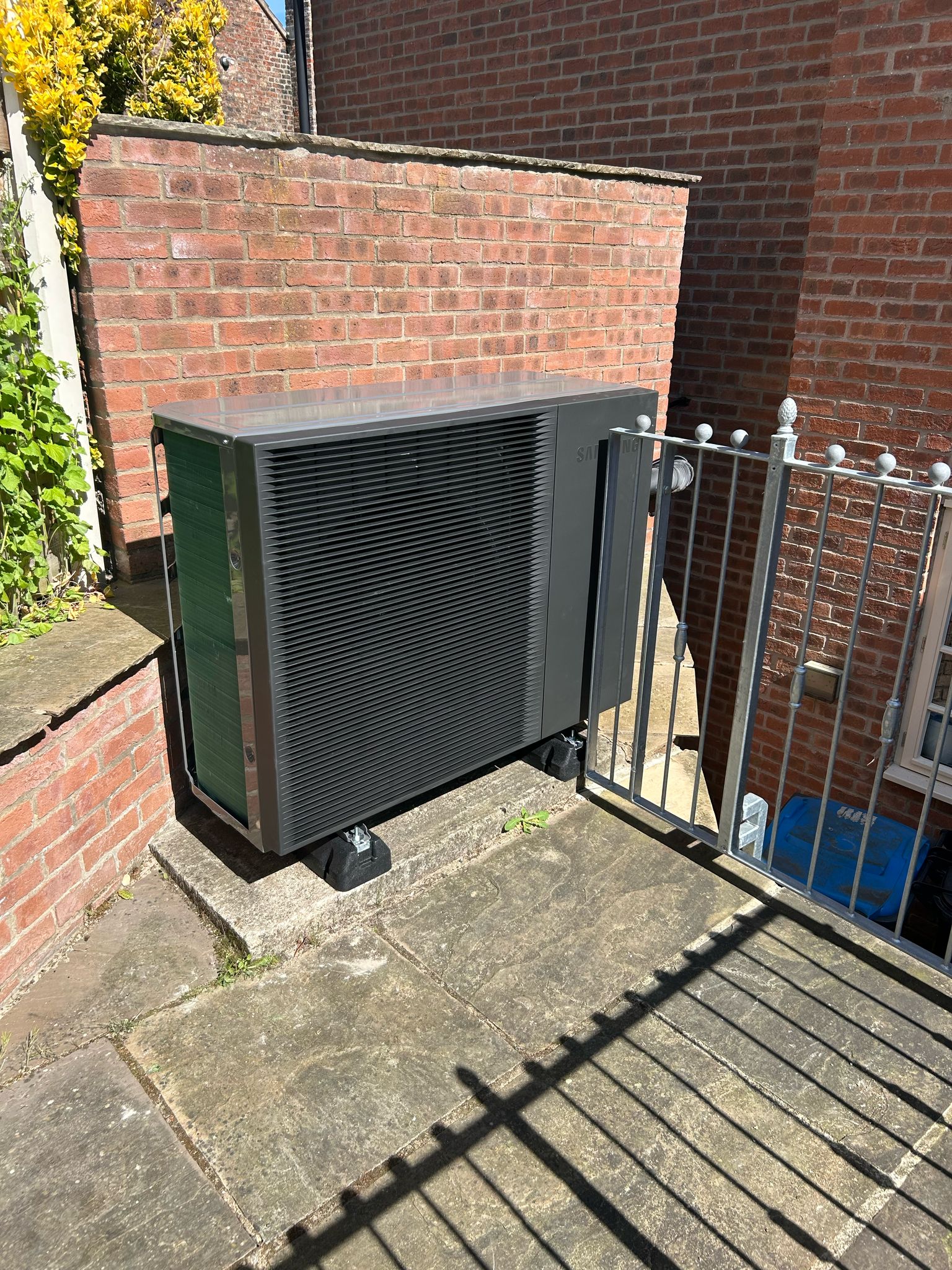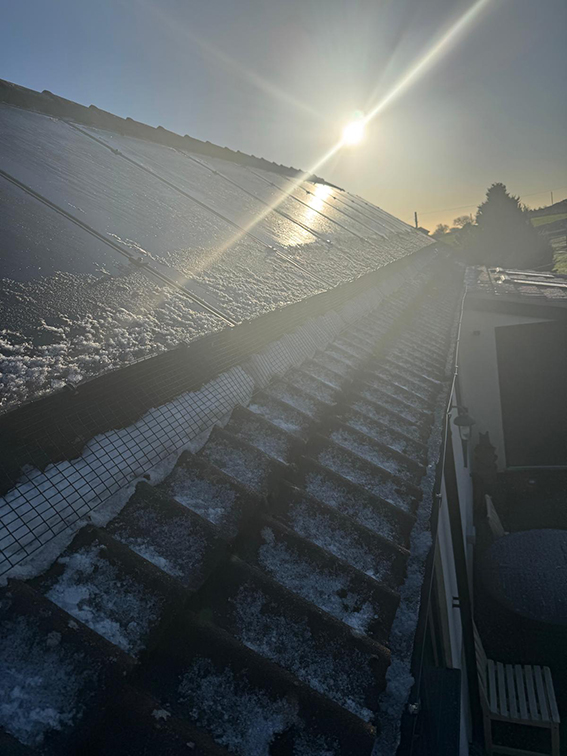
Can I Get Solar Panels on a Flat Roof?
You can, indeed!
But, like most major improvements to your home, it needs thinking about carefully before you proceed.
All reputable installers know the rules and regulations that come with mounting panels on any structure, so make sure the people are dealing with have experience in mounting panels in less than usual places.
Understanding Flat Roofs and Solar Panel Compatibility
Mounting panels on a flat roof comes with some problems that pitched roofs don’t present.
For instance, a panel laying flat, or parallel to the ground, won’t be getting the full effect of the sun’s rays.
This is a physics thing, so we won’t go into it too deeply.
The simple way of putting it is:
As we are in the Northern Hemisphere, and quite a way north to boot, the sun doesn’t sit directly above us – it’s at an angle.
That means the photons that are heading for your panels are coming in at an angle too, and angling the panel correctly helps us harvest more of that lovely energy.
So, while panels are certainly compatible with flat roofs, you will need to mount them correctly.
How Solar Panels Work on Flat vs. Sloped Roofs
So, the optimum angle for a solar panel to be fitted at is between 30 and 40 degrees and the average pitch for a domestic roof in the UK is 20 to 50 degrees, with most falling between 40 and 50.
As you can see, the job is more or less done for you.
When it comes to a flat roof, you will need to have a system that angles the panels for you, and that system need to be secure and safe too.
Another disadvantage to mounting panels on a flat roof, at least on a domestic dwelling, is there is much more chance of the area being shaded.
Flat roofs in homes tend to be extensions, or garages, and these can be overshadowed by other buildings and foliage.
Mounting Systems for Flat Roof Solar Installations
The solar energy industry in the UK is very much geared towards putting panels on people’s roofs and the vast majority of roofs in this country are sloped – or ‘pitched’.
That means that the mounting kits that are cheapest, and most readily available, are the ones you’ll find on top of most people’s houses.
Pitched roof installations usually mean you simply sliding a tile across, attach a ‘hook’ to the beam below, slide the tile back, attach a rail to the hook … then the panels to the rail.
The weight of the panel itself will add to the safety of the system – and these systems have been tested in just about any kind of weather you can think of.
For mounting on flat roofs there are a few different options.
Mini Rails
These are very popular when it comes to fitting panels on box section metal roofs – so factories and warehouses and sometimes domestic garages.
Instead of a ‘hook’ the rails are simply attached straight to the metal roof with self-tapping screws or bolts … and usually they just hold a couple of panels.
This system is cheap, quick and perfect for low load bearing roofs.
They tend to make the angle of the panels quite shallow and self-cleaning goes out the window, so you’d need to get the window-cleaner round more often.
A Frames
These are one of the most popular mounting systems for flat roofs.
They are exactly what they sound like – frames that look like a letter ‘A’ … meaning they can angle the panel to the exact pitch you want.
They can be bolted to roofs, like the mini rails, or you can weigh them down with ballast.
There are a lot more pricey than mini rails, but they are also a lot more versatile.
Tubs
Tubs are the most popular method of flat roof mounting for customers at UK Energi.
They’re exactly what you think, a big tub that the panel sits on top of.
They can be cut, or manufactured, to any angle you want and, as they are hollow, you can simply weigh them down with some kind of ballast – stones, sand or even water.
As they are so easy to move around, and don’t require any kind of fixing, they can be used for floor mounting too – especially on solar farms.
Of course, for extra safety, they can be attached to the roof with fastenings or straps.
Benefits of Installing Solar Panels on a Flat Roof
There can be advantages to fitting panels on a flat roof – even in a domestic setting.
If the shading allows you can position your panels at the perfect angle, and in the perfect direction.
Obviously, when fitting on a pitched roof you have no real choice on angle or direction, so a flat roof may make your panels a few percentage points more efficient.
You can also mount them back-to-back, to get that sweet east/west spilt.
Tubs can also be more secure in certain circumstances, as they are generally stand alone, so they’re not as susceptible to air pressure building up.
Potential Challenges and How to Overcome Them
To be fair, there aren’t many disadvantages to a flat roof installation apart from the cost of the mounting system and the chance that the area may be more shaded.
Shading can be overcome by fitting optimisers to each panel – this maintains the average efficiency and keeps the whole array functioning at its optimum levels.
Not all flat roofs are load bearing, so that’s something you have to bear in mind when considering how many panels you’re installing and what you want to achieve.
As we mentioned earlier, flat roof installations tend to favour a ‘standalone’ layout – so they do take up more space.
Do You Need Planning Permission or Permits for Flat Roof Solar Installations?
It’s not normal to need planning permission on a flat roof in a domestic setting – just ensure you, or your installer, comply with all local building regulations.
That means keeping panels at least a meter from the edge of the roof, for wind loading reasons … and they mustn’t be higher than a metre above the roof.
If you mount panels on the ground, there are more regulation you have adhere to.
Fitting panels on commercial buildings wouldn’t usually need any planning permission.
Listed building, or buildings in conservation areas, may need extra planning – but that’s the case even if you are fitting on a pitched roof.
Flat Roof Solar Installation: What to prepare for
A lot of the ‘problems’ you will face with a flat roof installation are the same as a pitched roof install.
Heat
Not usually a huge problem with a flat roof installation as the panels are spaced out and have plenty of air flowing round them
To be honest, not much of a problem here in the UK anyway.
Panels can heat up though, and this means they lose some of their efficiency due to resistance in the cells – but, so long as there is a good amount of air circulating around the panels, you’re not going to notice too much difference.
Strong Winds
Now, we like to complain about the wind here in Britain, but the truth of the matter is we don’t usually get winds strong enough to dislodge a solar panel.
Sure, we occasionally see people’s trampolines being slung around the garden, but they are very big, very light and very flat – they aren’t usually pinned down either.
That said, the change in climate means we are seeing an increase in more extreme weather.
A flat roof solar system is more susceptible to strong winds as the tubs aren’t always attached to the roof, there isn’t as much shelter from the roof itself and panels can be lifted into the air.
Rain
Rain isn’t going to cause any damage to your panels unless we experience some kind of biblical flood!
But the flatter the panels are mounted, the less they will ‘self-clean’.
Rain is the friend of the well-angled panels as it keeps them free of dust and debris and, as we have a fair bit of rain the UK, this keeps them pretty clean all year round.
Water can actually pool on flatter panels too, causing stains and reducing the efficiency.
Snow
Does it snow in the UK anymore?
Well, if it does, flatter panels may keep the snow on them for longer as it won’t slide off.
Is a Flat Roof Solar System Right for You?
The first answer to this question would usually be ‘only if you don’t have a pitched roof’.
That said, if you only have a north facing, pitched roof it would be worth exploring a floor or outbuilding mounted system to full utilise the sunlight.
You may also want extra panels on your home that won’t fit on the pitched roof.
Whatever the reason, if they are fitted correctly flat roof mounted panels are every bit as efficient and useful as those mounted on pitched roofs.


